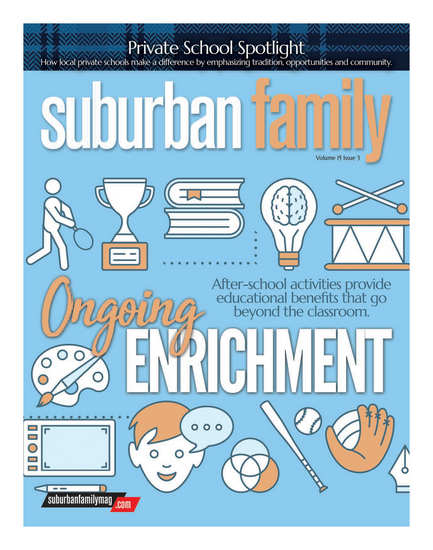
As college costs escalate, local families are finding creative ways to foot tuition bills without breaking the bank.
A high achiever at Eastern Regional High School in Voorhees, Allison Blackman will admit Camden County College was not exactly her dream school. But, upon graduating during the height of the recession in 2008, Blackman needed the best education at the most affordable price. The dilemma—more complex than any SAT problem—required a multiple step solution.
So, for her first two years of college, the Voorhees resident lived at home and attended CCC tuition-free through the New Jersey Stars program. Now, the chemistry major is starting her junior year at Montclair State University. Assuming she keeps her grades high, the state will pick up half her tuition. And by buying used books and selling them back at the end of the semester, she’s been able to save an additional $1,500 to $2,000.
Looking back, Blackman, 20, says her college experience so far has been positive, especially after meeting so many ambitious students at CCC in similar financial straits. Looking forward, she’s excited to finally go away for college—with the knowledge that she’ll graduate debt-free, having saved some $33,000 in tuition and fees.
“I am definitely excited about starting Montclair,” she says. “I feel like I am starting a new chapter within my college years, but not starting over. It’s just a continuation, but will let me experience another way to learn.”
In an age where the average price of a private university hovers at $35,000 per year—and in a state where the colleges, according to a recent report from the U.S. Department of Education, rank among the costliest in the nation—more and more local families are crafting creative approaches to financing higher education. Tactics include spending the first year or two living at home while attending county college, seeking out relatively obscure scholarships, and hard bargaining with institutions over financial aid packages.
For high-achieving students, there are options like the New Jersey Stars program, which encourages students like Blackman to utilize the county college system. In addition, many top-rated universities use their large endowments to court exceptional students.
For families that don’t qualify for enough need-based aid, considering such options is necessary: the alternative can be graduating with a staggering amount of debt.
Unfortunately, many local students are doing just that. College seniors who graduated in 2009 owed an average of $24,000 in student loan debt, up 6 percent from the year before, according to the Project on Student Debt. In 2008, 67 percent of students graduating from four-year colleges and universities had student loan debt, up 27 percent from 2004.
And the rough job market means that fewer graduates are landing jobs to pay back what they borrowed. The chances of graduating in debt in New Jersey are especially high given the price of Garden State colleges. Rowan University is the nation’s fourth most expensive public college in terms of net price, which includes the total cost paid by an average student, including room, board, books, financial aid, scholarships and grants.
A new U.S. Department of Education website, the College Affordability and Transparency Lists—designed to hold schools accountable for skyrocketing costs—pegs the average annual price tag of attending Rowan at $19,344. And that’s for in-state students.
Other local institutions also fare poorly in the price rankings. The New Jersey Institute of Technology has the fifth-most-expensive tuition and fees of any public college in the nation, at $12,856 annually, while the College of New Jersey ranks 11th on that list at $12,722. And Drew University, at a $34,379 net annual cost, is the 13thmost- expensive private school in the country.
Part of the reason for spiraling costs can be traced to a long-term shift in how New Jersey’s colleges have been funded. In fact, state schools have been moving from a system strongly backed by state aid to one that is tuition driven since the late 1970s. In 2009, New Jersey devoted 8.4 percent of its budget to higher education; the national average is 10.4 percent, according to an analysis by the National Association of State Budget Officers. And Gov. Chris Christie’s recent line-item vetos to the state’s 2012 budget didn’t ease students’ predicament: he eliminated a $49 million proposed increase to the budget of the state Tuition Assistance Grant Program and a $5.5 million addition to the Education Opportunity Fund, and he reduced state contributions to higher education employee benefits. As a result of declining state investment and rising enrollments, students’ share of educational costs has risen to about two-thirds, up from about 30 percent in 1990, according to the New Jersey Association of State Colleges and Universities.
And this summer, local colleges announced a fresh round of tuition increases: a 1.8 percent bump for Rutgers, 3 percent for Rowan, and 5 percent for Richard Stockton College of New Jersey.
The state is not the only culprit. Many of the colleges themselves do not give students the full amount of financial aid they’re entitled to according to the law, says Sanford Karpo, a college financial aid consultant based in Cherry Hill.
In the 1980s, he recalls, financial aid was straightforward. A formula determined the amount of money a student could afford to pay annually for higher education. Schools gave out financial aid to make up the difference.
“Today colleges try to extract the most money from you as possible,” charges Karpo, a former accountant who operates College Financial Aid Services of Cherry Hill. “They did not have that attitude in the 1960s and ’70s. They tried to get you the best education at the lowest price.”
Karpo, who has processed some 4,000 applications since turning to consultancy, steers students to suitable colleges that have a good history of honoring the financial aid formula. He says forms have become so complex that families often benefit from turning to a consultant to qualify for the maximum amount of financial aid, much in the same way that an accountant can help obtain the optimal tax refund.
In fact, many people miss out on financial aid because they erroneously believe they make too much money or have too much equity to qualify, or fear that the paperwork is too onerous, Karpo says. He argues that everyone planning to send a child to college should apply for financial aid. In reality, the federal formula takes into account income, equity and personal criteria such as the number of people in the family. And even if the student doesn’t qualify for need-based aid, there are strategies for obtaining “merit” assistance.
Still, many still believe the best way to pay for higher education is to save aggressively over the long haul. With her background in finance, Mindy Hauptman, a Voorhees mother of two, started saving for college when her oldest son, Aaron, was born. Eighteen years later, Aaron is starting Princeton University as a freshman, and Hauptman is prepared.
“It’s the way I am,” explains Hauptman, who develops financial products for TD Bank. “Anytime there was a windfall, I’d sock it in there. If I got a bonus, it went into savings instead of into something fun to have.” Starting with custodial accounts in her children’s names, she switched to 529 accounts—tax-advantaged savings plans designed to encourage saving for college costs—when they came on the market. Besides the tax benefits, the 529 is ideal for college savings because the parent controls the account and money can be transferred among siblings, explains Hauptman.
But even for families that cannot afford Princeton’s hefty $52,670 annual net cost, if you can get into the Ivy League school, you will likely graduate debt-free. Princeton is among a handful of upper-tier schools that offer comprehensive no-loan financial aid, replacing loans with grants and work-study plans.
For Princeton junior and Voorhees native Briyana Davis, the loan-free package has not only made it possible for her to pursue studies without worrying about taking on debt; it has allowed her to teach in South Africa this summer. Princeton’s financial aid calculates what each family should be expected to contribute and covers the rest of the cost, she says.
“If paying off debts was a problem, I probably would have had to find a job this summer instead of traveling,” explains Davis, a 2009 graduate of Eastern who earned money during the year working at a university library. “Also, Princeton paid for me to come to South Africa to do this internship, and since I am on financial aid, they covered the flight as well.”
For families starting their college search, the financial unknowns can be just as stressful as the college admissions process. Marla Feldman Vecchio, whose oldest daughter, Alexa, is a junior at Cherokee High School in Marlton, says the goal this year is to narrow down what Alexa may want to do with her life first. A stellar student, Alexa is a natural leader who enjoys writing and volunteering with special needs populations.
But Feldman says she’s heard enough stories from friends and neighbors— whose grown children are currently jobless or underemployed, with thousands of dollars in debt—to factor finances carefully into the decision.
“To think someone can leave school $60,000, $70,000, $80,000 in debt with little job prospects is what I find scary,” says Feldman Vecchio, who also has 8-year-old twins. “I don’t want that for my daughter.”
Published (and copyrighted) in Suburban Family Magazine, Volume 2, Issue 6 (August, 2011).
For more info on Suburban Family Magazine, click here.
For information about advertising in Suburban Family Magazine, click here.
To find out where to pick up your copy of Suburban Family Magazine, click here.




